Fossil Dinosaur Bone Specimen -DP14-Polished Window-Great Color-Jurassic
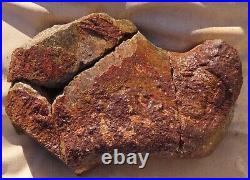
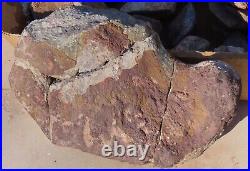
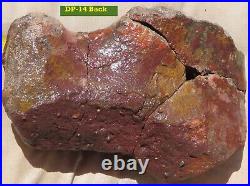
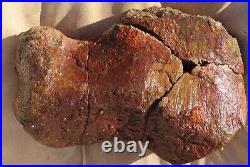
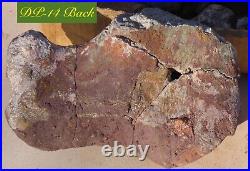
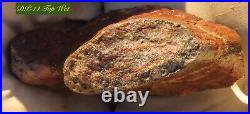
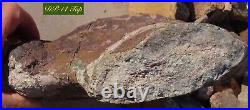
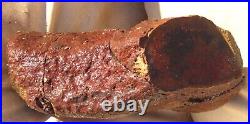
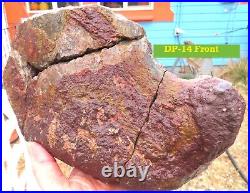
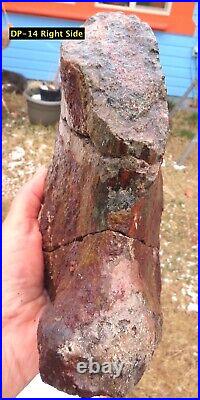
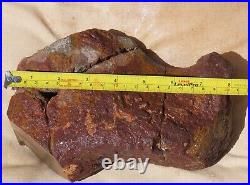
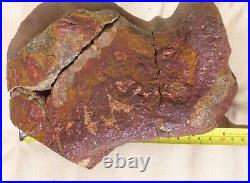
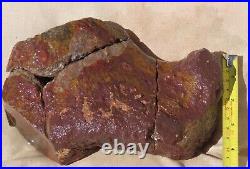
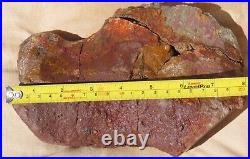
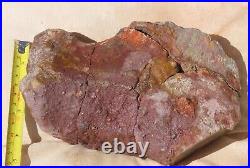
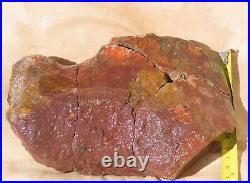
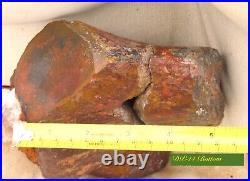

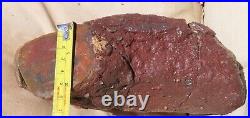
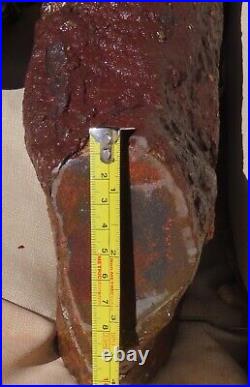
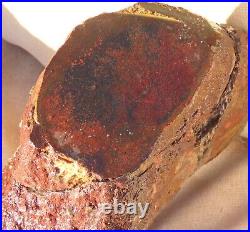
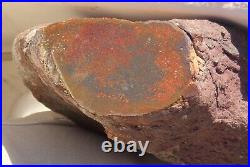
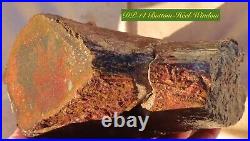
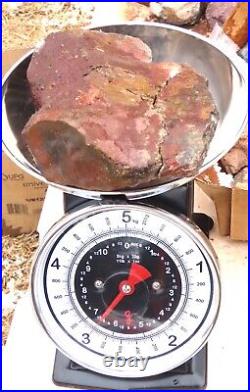

Fossil Dinosaur Bone Specimen-DP14-Polished Window, Great Color- Jurassic. DP-14 - This specimen is shaped like a slipper with the sole/bottom having a window cut on the heel. The piece shows a fair amount of rind, but also has what appears as iron oixide along the toe, bottom and ;lightly covering some areas on front and back sides. Photographed both wet and dry. The specimen shows color both ways.
An outstanding piece, likely an Allosaurus upper leg bone. 6.6 Pounds/ 3,000 Grams. Front- Dark tan, rust/iron colored, grey and whitish fairly smooth rind toward top, progressing into a rough coating of iron?
It's a toss-up as to whether to seal it; some prefer the natural look of the bone, others want to brighten it up with a polyurethane seal. 8 1/2 Wide X 4 3/8 Tallest point (heel) X 3 Tall at Toe. Back- (Dry) The fine marrow cells extend along the toe/Left end, then smooth rind with iron color, orange, tan and toward the right end, pinkish at the heel, and an almost green with tans and iron color toward the top. Right Edge/Toe - Dry it shows the iron oixide layers, with fine marrow cells of white with tan. Wet it livens up with a bright tan showing up more and a sprinkling of white cells.Bottom/Heel/Window - The bottom of the piece is mainly a rough iron color. Window Measures 2 1/4 Wide X 3 1/4 at Tallest point. Even dry the blood red and orange cells show up with black and some tan and white cells. Allosaurus is a genus of large carnivores theropod dinosaurs that lived 155 to 145 million years ago during the Late Jurassic epoch.
The name Allosaurus means "different lizard" alluding to its unique (at the time of its discovery) concave vertebrae. It is derived from the Greek word allos- meaning different or other. One of the earliest fossil remains ascribed to this genus were made by paleontologist Othniel Charles Marsh in 1877.The genus has a complicated taxonomy, and includes at least three valid species, the best known of which is A. The bulk of Allosaurus remains have come from North America's Morrison Formation, with fossils also known from Portugal.
The discovery and early study of Allosaurus is complicated by the multiplicity of names coined during the Bone Wars (a rivalry between two prominent paleontologists) during the late 19th century. In this history was a bone obtained in 1869, secondhand, by Ferdinand Vandeveer Hayden, the famous explorer whom later conducted the geological surveys that discovered Yellowstone, among other places.The piece came from Middle Park, near Granby Colorado. The locals had identified such bones as "petrified horse hoofs". Hayden sent his specimen to Joseph Leidy, who identified it as half of a tail vertebra, and tentatively assigned it to the European dinosaur genus Poekilopleuron. He later decided it deserved its own genus, Antrodemus.
Antrodemus became the accepted name for this familiar genus for over 50 years, until James Henry Madsen (an American vertebrate paleontologist and geologist and main leader of excavations at the Cleveland-Lloyd Dinosaur Quarry in the 1960's) published on the Cleveland-Lloyd specimens and concluded that Allosaurus should be used because Antrodemus was based on material with poor, if any, diagnostic features or locality information for example, the geological formation that the single bone of Antrodemus came from is unknown.
